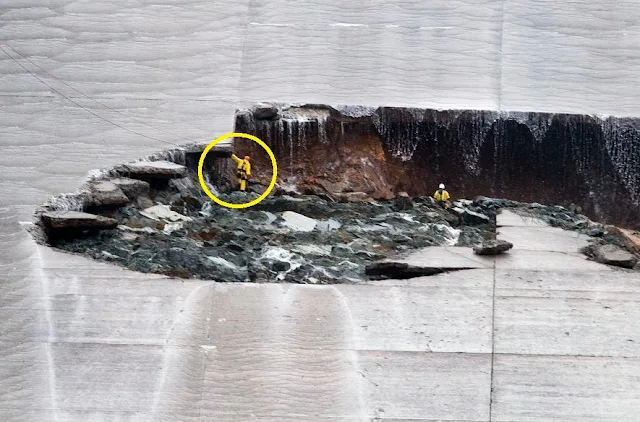Huge Sinkhole Opens at Highest Dam in the U.S.
As heavy rains fill Lake Oroville in California, the overflow damages a spillway and forces an emergency diversion of water.
After a year of heavy rains, California’s Lake Oroville—home to the country’s tallest dam—has almost reached its maximum capacity, and its infrastructure is feeling the strain.
That’s a complete reversal from the end of 2015, when persistent drought brought the lake’s water level to about 694 feet, or 33% of capacity—the second lowest level ever recorded.
By the morning the lake was swollen with so much water, 895 feet, that it had reached 96% of its maximum capacity.
Unexpectedly heavy rains and rapidly-rising water levels have contributed to some infrastructure challenges that now have engineers scrambling to keep up with the water.
An emergency spillway, which has not been used since the dam’s completion in 1968, was opened Saturday morning after previous efforts to contain the water did not prove sufficient.
The California Department of Water Resources upped the output of water from 40,000 to 65,000 cubic feet per second in an attempt to avoid the use of the emergency spillway. But the torrent of water damaged the main spillway, opening a sinkhole in the middle of the passage. The cavity grew so big that it seemed to swallow the workers who climbed in to inspect the damage.
Engineers were forced to temporarily stop the water flow after the extent of the damage became apparent.
The above post is reprinted from National Geographic









